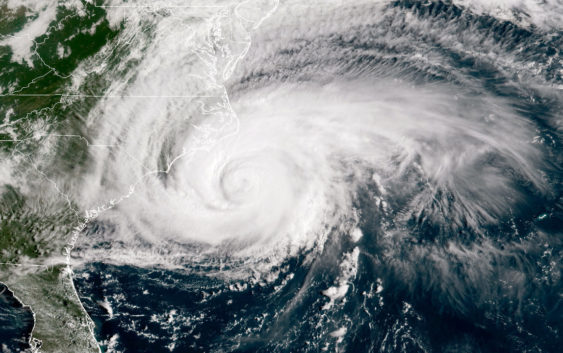- Report: Coastal flooding could threaten 1.4 million homes by midcentury
- Caught on camera | Tornado touches down in Missouri
- Carolina Hurricanes playoff tickets go on sale next week
- Storms kill 6 in the South and Midwest as forecasters warn of catastrophic rains, floods this week
- Weather Impact Alert: Cold front could trigger severe weather in Houston area this weekend | See timeline
In an especially active hurricane season, could we run out of names?

Every year, storms pop up during hurricane season and all of a sudden we have a Katrina, Sandy or Wilma threatening to wreak havoc on us.
After all the years of recorded named storms, one has to wonder: What happens when we run out of names? Well, it’s kind of a twofold question. And the answer is, we (kind of) don’t. Stay with me.
For starters — and a brief insight as to why we use names — until the early ‘50s, tropical storms and hurricanes were tracked by year and order in which they occurred during that year.
“During World War II, in the Pacific Theater, Army Air Force meteorologists started naming them after their girlfriends and wives back home,” meteorologist Paul Gross said.
According to the National Oceanic and Atmospheric Administration, it was learned over time that it was easier and less confusing to use names in written and spoken communication, especially when there are two or more storms taking place at the same time.
So after more than two decades of using just female names for storms, the practice of using male and female names for the Atlantic and Gulf of Mexico storms began in 1979 (with the exception of Q, U, X, Y and Z).
“The World Meteorological Organization came up with a six-year rotating list of names for hurricanes,” Gross said. “So we get the same list of names every seventh year.”
The only time we fall out of that routine is when there’s a storm so costly or deadly that using the same name in the future would be inappropriate.
“They do this so that people never have to go through another Andrew, or Katrina, or Camille, or Maria, etc., ever again,” Gross said. “Just hearing those names associated with an approaching storm would cause some people to panic.”
So during a meeting of the international committee of the World Meteorological Organization — which, by the way, has the control of the naming of storms — they will strike a name from a list and another name will replace it.
Now we arrive at our initial question: What happens when we run out of names?
Should we experience a season in which we have 21 named tropical cyclones in the Atlantic basin, any additional storms get names from the Greek alphabet.
So, let’s say we have a storm named Walter. If another formed, we would then move onto Alpha, then Beta, then Gamma and so on.
The first and last instance in which the Greek alphabet was needed was in 2005, during the busiest hurricane season on record, when there were 28 named storms.
“After getting through the alphabet — and remember that every letter isn’t used, because it’s tough to find six names beginning with some of the uncommon letters — we had storms named Alpha, Beta, Gamma, Delta, Epsilon and Zeta,” Gross said. “The next busiest season was 1933, when we had 20 storms, but they didn’t name storms back then.”
When asked if there’s a chance that we could ever run through the list of Greek letters, too, Gross said, “I highly doubt that would happen!”
Let’s hope not.
Graham Media Group 2018